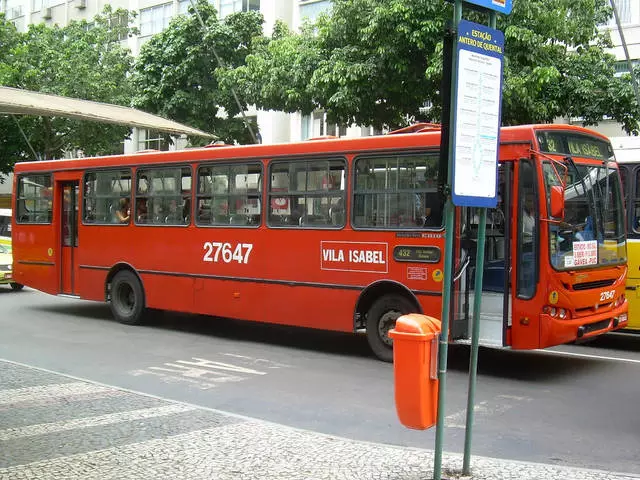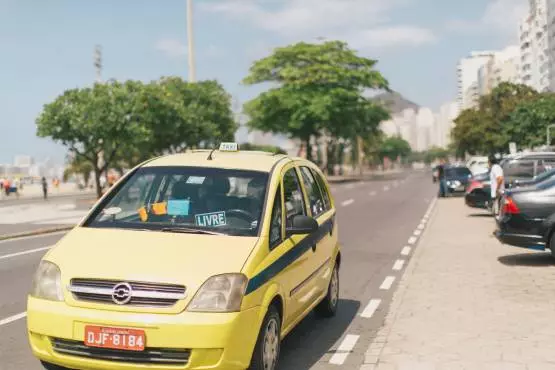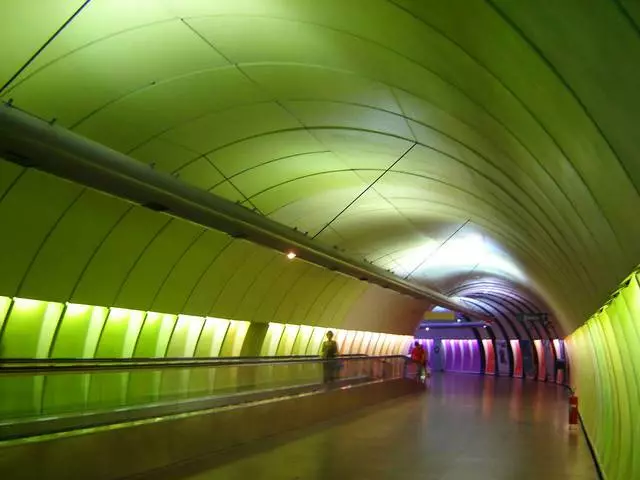The public transport system in Rio de Janeiro is simple and accessible, it allows the tourist without any problems to get almost to any interesting part of the city. Himself ride around the city on the rented car is not worth it - because of a fairly chaotic movement on the roads. The easiest and fast type of transport is the metropolitan, however, it consists of only two branches. The cheapest way of movement is a city bus. You can move around the city and on foot, but not always - after closing stores, when their protection is diverged by houses and passersby disappear from the streets, it may be unsafe. In the dark time in the city it is better to move on a taxi.
Bus
The bus is the main type of transport in Rio de Janeiro. It stops only on demand. For the passage, pay at the entrance to the salon; Cook money better in advance. As a rule, conductors work in urban buses. An unpleasant moment: a lot of people are always hamper into the peak hours in transport, so that in such a turmoil you may well be robbed. For this reason, when traveling on buses Rio, large amounts of money and value do not take better with them. In particular, be careful when traveling along the tourist routes - for example, in transport, which goes to the grief of the sugar head. In transport, come from the rear entrance, go out - from the front. This applies to old buses, in the new, everything happens on the contrary. Nowadays, air-conditioned bass can be seen on the streets of Rio de Janeiro. The fare in such a little higher. On the same line, buses of different types are usually operating - both with the Condish, and without it. Generally moving around in a city bus - not a particularly comfortable occupation; However, out of the pros, it can be noted that there are enough seating in the cabin. The speed of movement is about sixty km per hour. The work of the chaffins is paid for a mileage, so in terms of the accuracy of driving the case here is not very good. Another positive moment is that you can get out anywhere; To alarm a stop, make the lace in the cabin.

Taxi
Such a shipping service in Rio is well developed. In general, a taxi here is the most comfortable, and besides, a rather inexpensive type of transport. To understand whether the car is busy or free, take a look at the red meter flag: if it is raised - the car is free, if the flag is not visible - then it is busy. Usually passengers are placed in the rear seat; It is worth sitting next to the driver only when there are many people going with you, and they still do not fit in the back. There are two types of cars: red and blue radio taxi and yellow. Cheaper services - on the second type of transport. Radio taxi travel will cost you percent for thirty more expensive. This type of machines are considered safer and more reliable, such a taxi is usually air conditioning. Perhaps for large baggage will have to pay extra. Yellow taxis can be found in any part of the city, and catch the car right on the street absolutely no problem. Calculation of value is carried out according to one of two different tariffs - day or night. Before your trip, always check and require a taxi driver to turn on the counter. The passage of the route of Ipanema Copacabana is approximately 5 reals, Copacabana Downtown - from fifteen to twenty. A trip to the airport costs thirty. In a taxi, it is customary to leave tips - in the amount of ten percent of the cost according to the meter readings.

Metro
Metropolitan in Rio is open on March 5, 1979. The total length of the lines is forty-eight km. This is a fairly cheap and safe view of transport, equipped with air conditioning. The metro in Rio is the second largest in the country, it is inferior to the Metropolitan in São Paulo. Passenger traffic is approximately 1.1 million people per day. The metro opens at six o'clock in the morning and works until eleven in the evening, it is closed on Sundays. There are both ground and underground stations. Lines are only two - the first and second ("orange" and "green"), there are thirty-five stations on them.

The compositions of different lines are partially followed by a common path, but it is difficult to confuse them: those belong to the first line are painted in orange, the compositions of the second line are green. In this form of transport it will not work to get to the beaches of Ipanoma or Leblon, but on Copacaban - quite. Another interesting point: on the map lines of the subway you can see the routes marked by the phrase "Metrô Na Superfície". These are such blue buses that drive from the metro stations in various directions. Marking the same "Bicicletário" means a station equipped with a parking lot for bicycles; This is common to its own and municipal two-wheeled vehicles. On the local subway, it is good to engage in independent study of the old part of Rio de Janeiro, as well as use this type of transport to travel from Copacaban to the areas of Flamengo and Botafogo.
Pleasant travels in Sunny Rio!
